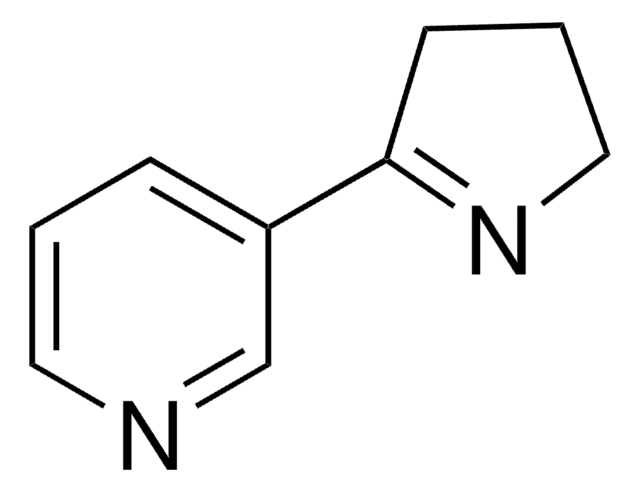41406
4-Phenyl-2-butanone
analytical standard
Synonym(s):
Benzylacetone, Methyl 2-phenethyl ketone, NSC 44829, NSC 813
About This Item
Recommended Products
grade
analytical standard
Quality Level
Assay
≥97.0% (GC)
shelf life
limited shelf life, expiry date on the label
refractive index
n20/D 1.512 (lit.)
bp
235 °C (lit.)
density
0.989 g/mL at 25 °C (lit.)
application(s)
cleaning products
cosmetics
food and beverages
personal care
format
neat
SMILES string
CC(=O)CCc1ccccc1
InChI
1S/C10H12O/c1-9(11)7-8-10-5-3-2-4-6-10/h2-6H,7-8H2,1H3
InChI key
AKGGYBADQZYZPD-UHFFFAOYSA-N
Looking for similar products? Visit Product Comparison Guide
General description
Application
Storage Class Code
10 - Combustible liquids
WGK
WGK 1
Flash Point(F)
221.0 °F - closed cup
Flash Point(C)
105 °C - closed cup
Choose from one of the most recent versions:
Certificates of Analysis (COA)
Don't see the Right Version?
If you require a particular version, you can look up a specific certificate by the Lot or Batch number.
Already Own This Product?
Find documentation for the products that you have recently purchased in the Document Library.
Our team of scientists has experience in all areas of research including Life Science, Material Science, Chemical Synthesis, Chromatography, Analytical and many others.
Contact Technical Service








